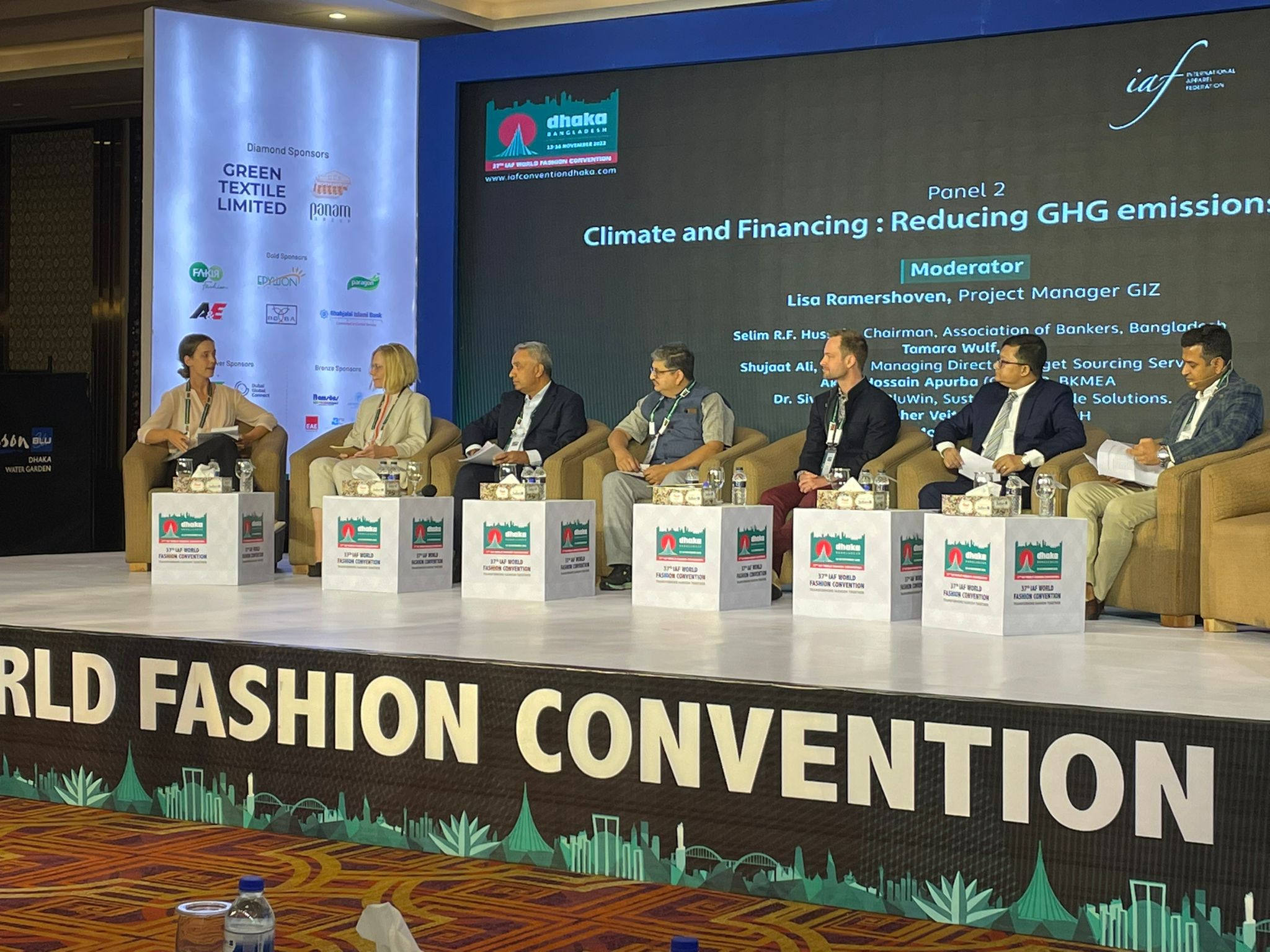insight
Power to the garment manufacturers
Do garment manufacturers hold the key to transforming the global fashion industry's future despite being squeezed by high costs and low demand due to rising inflation?

I
n his opening remarks, at the International Apparel Federation’s 37th World Fashion Convention held in Dhaka, Bangladesh, IAF president Cem Altan explained connecting supply to demand is difficult given the cost-of-living crisis.
However, he said: “Our needs can only be met when there’s collaboration between buyers and manufacturers,” and continued: “Building more flexible supply chains at the right time requires investment but the supply chain often doesn’t enable manufacturers to make the necessary investments.”
As a garment manufacturer himself Altan knows first-hand the pressures that exist on the frontline, but he was eager to tell attendees that manufacturers also hold the magic key to transforming the fashion industry.
Creating better supply chains together
John Thorbeck, the chairman of Chainge Capital, a firm focused on fashion industry transformation and sustainability shared his initial insights from a study commissioned by the International Trade Centre (ITC) in collaboration with the IAF to help garment manufacturers and brands create better supply chains together.
He explained addressing the purchasing practices that need to change is fundamental for the buyer/supplier relationship and his focus is on supplier-led innovation that doesn’t need permission from retailers or brand customers.
He revealed the aim of the study, which is still in progress, is to look at process innovation, consumer change, the science tools that don’t exist in the upstream landscape of the supply chain and the overall impact across all tiers of the supply chain.
Thorbeck posed the question – can shared risk be a model between buyers and suppliers rather than a seasonal transaction of price?
He was keen to explain that shared risk is the supply chain point of view and focuses across all tiers of the supply chain, whereas shared value is the financial point of view and focuses on the firm: “Both are perspectives of value and that value is quite significant.”
Sadly, Thorbeck was unable to present what he described as a magic pot of gold to answer the question.
But, he said, it’s a process that can be improved, made to be more efficient and made to operate with less inventory.
He explained shared risk is the solution and it acts as an alternative to the cost relationship.
He said: “I believe the global supplier community can be the leader in that transition and this is not a change that needs permission from retailers – for the retailers that are participating they welcome the change and want to find a way to accelerate its results.”
The impact of Europe’s Green Deal
It’s almost impossible to discuss transforming the buyer-supplier relationship without including the impact of sustainability and Altan made the point that Europe’s Green Deal will lead to the biggest amount of legislation the apparel sector has ever seen.
Euratex’s director general, Dirk Vantyghem, explained Europe is rethinking its relationship with global partners. He said it’s about having a more critical relationship with third parties and respecting human, environmental rights and chemical regulations.
He highlighted that Europe wants to promote free trade and open borders but also wants everyone in the global trading environment to be playing by the same rules.
One of the key components for the EU’s vision of the future is to ensure all apparel products placed on the EU market are durable, repairable and recyclable, and to a great extent are made of recycled fibres, free of hazardous substances and produced respecting social rights.
He stated the EU wants all global supply chains to comply with these standards and added this will become the norm to operate in the EU in future.
Linked to this are new profitable models for brands and retailers and even manufacturers such as re-use and repair services, and Vantyghem was keen to note: “In a competitive and resilient sector producers should take responsibility for the products along the value chain.”
He added: “Let’s work together to build a global sustainable textile and fashion industry.” Vantyghem, on behalf of his European apparel industry members, is also keen to reach out to the apparel community globally to work together on the green transition and maintain fair competition throughout the industry whilst making a positive environmental impact.
Vantyghem believes procurement needs to be based on price along with sustainability. He stated: “We need to make sure there is a growing market and demand for sustainable products otherwise this whole strategy will not work.”
He continued: “We need to re-educate consumers on the value of a sustainable product and consumers need to be willing to pay a premium for that sustainable product.”
He also highlighted that in Europe, and indeed elsewhere, there remains challenges with attracting the right workforce to move the industry forward, which includes those with green and digital skills.
The importance of education and digitalisation
Ram Sareen, the founder and CEO of fashion technology design software company, Tukatech, agreed with Vantyghem and said digital skills and disrupting the sector are essential for progress.
He put it bluntly by telling the audience: “Welcome to the future! It arrived yesterday so we’re a bit late catching up but remember - change is constant but growth is optional.”
Sareen believes being a disruptor doesn’t equate to being a troublemaker. His interpretation is that it means trying to simplify the process and this is key for garment manufacturing and the future success of the fashion industry.
His message to global garment manufacturers is always produce garments in such a way that your staff can be paid a fair wage.
Sareen spoke directly to the garment manufacturers in the room when he said: “The only person who is stopping you from progressing is you.”
He pointed out that Nike has already showcased a complete sneaker designed using 3D technology and printed using 3D printing. He told the manufacturers in the room: “Whatever you’re doing - just ask the question - why am I doing this? Can I get the same result without having to do the same thing?”
Similarly, Imran Ahmed, the deputy executive director of the Shakti Foundation, a non-profit organisation focused on helping disadvantaged women said his organisation has grown at a very quick rate so in order to increase productivity, it had to use technology.
He said: “Technology has simplified the process so much – you can do a lot centrally and push it out.”
Ahmed admitted that his company hired a consulting firm to measure the options and the investment was around US$600,000 to $700,000. But he said the company has now grown from being a $6m to a $40m enterprise.
He added that, like textiles, a micro financing organisation is a high touch industry so it employs a lot of people to serve a lot of clients.
Bangladesh Garment Manufacturers and Exporters Association (BGMEA) vice president, Miran Ali, argued he’s seen a lot of manufacturers happy to adopt 3D but brands won’t always accept it so he asked who should the innovation be led by in the first place?
Sareen made the point that it’s often not the technology that’s the problem - it’s the implementation of it.
He said: “My message to all vendors is start adding value to your buyer – buyers are not in tune with every possible new thing. When you think about it – what’s the differentiator between Asia and China – US brands educated them [when they wanted to move garment manufacturing out of the country]. China then started selling their products direct to consumers and Shein is a great example of this.”
He continued: “In the age of the internet - what is it their designers can do that you can’t? Be honest and work as a partner – we have 100s of companies globally working as suppliers so don’t walk in to get an order – go in and offer a solution. If you believe in your product - give your solution.”
BACK TO TOP

Main image credit: Robert Way / Shutterstock.com